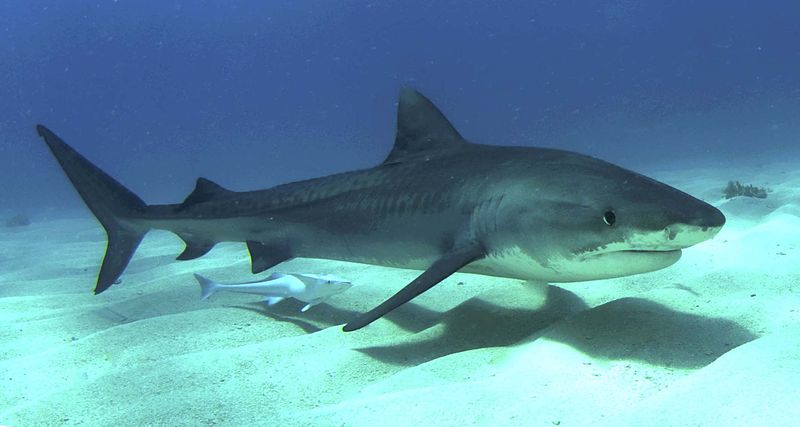Warning: Shark Incidents Spike in the Fall
“Pua ka wiliwili nanahu ka mano. When the wiliwili tree flowers, the shark bites.”—‘Olelo No‘eau, Mary Kawena Pukui
For centuries, traditional Hawaiian chants have warned about an increased risk of shark bites in the fall, when the wiliwili tree blooms. According to the state Department of Land and Natural Resources, Division of Aquatic Resources, that warning is still appropriate.
“October is the month with the greatest number of shark bites,” said DAR Administrator Bruce Anderson. “We recommend ocean users exercise a little more caution this month especially, and also through the end of the year. The chance of being bitten by a shark in Hawaiian waters is always extremely small, but does increase a bit during this time frame.”
According to DAR data, from 1980 through 2015 there were 122 unprovoked shark bites in Hawaiian waters—26 of those, or 21%, occurred during the month of October, with well-known victims such as Michael Coots (1997) and Bethany Hamilton (2003) suffering loss of limb.
In 2012 there were two bites in October. In October 2013 there were three, then four in October 2014 and three in October 2015.
“The three bites last October were all around O‘ahu, off different coasts of the island and took place over a span of 20 days,”DAR’s Anderson noted. “Two were very serious, with victims losing part of a limb. It was an unprecedented spike, but like nearly every spike in shark incidents, the most likely explanation is just chance.”
So far, no October bite has been fatal.
University of Hawai‘i researchers, funded in part by DAR, have confirmed the fall spike, and offered a possible explanation, at least in part. About 25% of the female tiger sharks in the Northwestern Hawaiian Islands migrate to the main islands in the fall to give birth. The increased number of sharks in nearshore waters, combined with their need to feed to replenish lost energy stores, may increase the likelihood of a bad encounter with a human.
Anderson offers the following advice: “The best thing ocean users can do to minimize their risk of shark bites is to utilize beaches with lifeguards, stay near other people and don’t go too far from shore. Also, avoid murky water and areas near stream mouths.”
More safety tips can be found at the Division’s shark website.
DLNR Division of Aquatic Resources shark bite data, 1980-2015, by month:
- Jan: 7
- Feb: 5, plus 1 fatal
- Mar: 12
- Apr: 10, plus 2 fatal
- May: 6
- Jun: 11
- Jul: 8, plus 1 fatal
- Aug: 9, plus 1 fatal
- Sep: 4
- Oct: 26
- Nov: 14, plus 2 fatal
- Dec: 10, plus 1 fatal
















